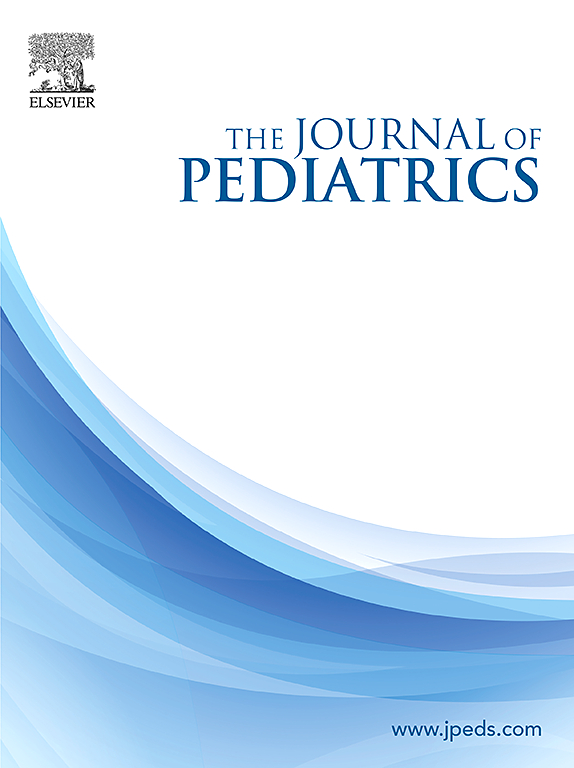Well-Being of Children and Adolescents with and without Special Health Care Needs Following the Lifting of Pandemic-Related Restrictions
IF 3.9
2区 医学
Q1 PEDIATRICS
引用次数: 0
Abstract
Objective
To examine the physical, psychological, and social well-being of children with and without special health care needs (SHCN) after pandemic-related restrictions were lifted.
Study design
Drawing on three-wave data from the SEROCoV-KIDS prospective, population-based cohort, we performed an outcome-wide, longitudinal analysis to investigate the association of SHCN (none, moderate, or complex needs) at time 1 (September 2022 through February 2023) with physical, psychological, and social well-being (15 outcomes) at time 2 (May through September 2023), adjusting for characteristics and prior outcome values at time 0 (December 2021 through June 2022).
Results
Of 1993 participants aged 2 through 17 years, 1533 completed the time 1 questionnaire (median age 10, 49.6% female) with 10.6% having moderate needs, and 3.3% complex needs. Although children with SHCN had not been more often infected with SARS-CoV-2 than healthy children, in 2023, they experienced more severe psychosocial consequences, especially poorer well-being, with a gradient according to the complexity of their needs. Children with moderate needs had more difficulties with physical (adjusted odds ratio 2.84 [95% confidence interval 1.42-5.67]) and social functioning (2.20 [1.33-3.65]) as well as externalizing difficulties (3.68 [1.67-8.11]) compared with their healthy peers but showed similar levels of prosocial behavior or social support. Those with complex needs were particularly at risk of poor physical, psychological, and social well-being.
Conclusions
Children and adolescents with SHCN suffered from poor well-being after pandemic-related restrictions were lifted, with no obvious improvement over time. Establishing sustained monitoring and tailored interventions is crucial to improve their persistent suboptimal well-being as we move beyond the pandemic era.
求助全文
约1分钟内获得全文
求助全文
来源期刊

Journal of Pediatrics
医学-小儿科
CiteScore
6.00
自引率
2.00%
发文量
696
审稿时长
31 days
期刊介绍:
The Journal of Pediatrics is an international peer-reviewed journal that advances pediatric research and serves as a practical guide for pediatricians who manage health and diagnose and treat disorders in infants, children, and adolescents. The Journal publishes original work based on standards of excellence and expert review. The Journal seeks to publish high quality original articles that are immediately applicable to practice (basic science, translational research, evidence-based medicine), brief clinical and laboratory case reports, medical progress, expert commentary, grand rounds, insightful editorials, “classic” physical examinations, and novel insights into clinical and academic pediatric medicine related to every aspect of child health. Published monthly since 1932, The Journal of Pediatrics continues to promote the latest developments in pediatric medicine, child health, policy, and advocacy.
Topics covered in The Journal of Pediatrics include, but are not limited to:
General Pediatrics
Pediatric Subspecialties
Adolescent Medicine
Allergy and Immunology
Cardiology
Critical Care Medicine
Developmental-Behavioral Medicine
Endocrinology
Gastroenterology
Hematology-Oncology
Infectious Diseases
Neonatal-Perinatal Medicine
Nephrology
Neurology
Emergency Medicine
Pulmonology
Rheumatology
Genetics
Ethics
Health Service Research
Pediatric Hospitalist Medicine.
 求助内容:
求助内容: 应助结果提醒方式:
应助结果提醒方式:


